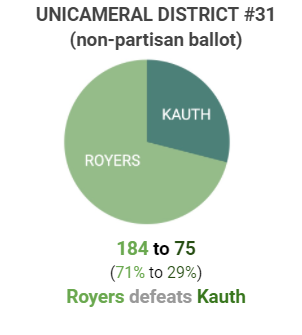Students getting a say
Mock election held for different political viewpoints to be shared
Mock elections are held every year in the month of November to allow students to share where their political standpoints are and to get a say early on in the democracy.
November 11, 2022
In the days leading up to the midterm elections, students and staff members had the opportunity t


 o take part in an online mock election, mimicking the real election so that students can get a taste of what voting looks like in the real world. Staff members were also included in the mock election so that results could show what the majority of the community’s political stands look like.
o take part in an online mock election, mimicking the real election so that students can get a taste of what voting looks like in the real world. Staff members were also included in the mock election so that results could show what the majority of the community’s political stands look like.
The online ballots were built off of the real thing so that students are able to receive valuable information and practice for their future in voting for candidates.
“Mock elections are very valuable as students have the opportunity to learn about the electoral process, issues, and candidates,” principal Dr. Greg Tiemann said. “We want our students to experience what voting is like so that they fulfill this important civic responsibility when they turn 18.”
The mock election results this year concluded that over 58% of the 274 people that voted wanted the house of representatives to go to Tony Vargas (D) over Don bacon (R), who received 42% of the votes. Another chart showed that 44.6% wanted Carol Blood (D) over Jim Pillen (R), 39.4% for governor. Some students even voted for the place to go to Scott Zimmerman (L), who received 16.1% of the votes. The last chart showed 71% over 29% voted for Tim Royers (D) rather than Kathleen Kauth (R).
Students also voted in a few for or against surveys including topics from the minimum wage and having to show photo ID in order to vote. In the first chart, 74.4% were for raising the minimum wage, and 25.6% were against it. The other chart showed 66.5% were for showing photo ID and 33.5% were against it.
“I voted in the mock election because I think the results are important as it ensures that student viewpoints are represented in our democracy,” sophomore Ruby Hinsley said. “It is also an important study of how candidates and issues are aligned with our general political positions and beliefs.”
The voting process is a little less exciting than it used to be. Before electronic voting, cardboard voting booths were set up during lunch or distributed paper ballots in Quality Time. This meant Political Roundtable club members got to experience some of the voting anomalies that often befall “real” election workers during the count, like what to do when a candidate’s bubble on the ballot isn’t darkened in any easily discernible way. But due to the shutdown of COVID-19, the election process has looked a little different ever since.
“Many students I’m sure in the years where we had the cardboard booths were faced with taking time out to stand in line and vote versus having lunch with friends,” social studies teacher Matthew Heys said. “They would obviously choose lunch and I get that, but that’s exactly what happens in real life, too. Oddly enough, a lot of Americans just don’t vote. Turning to online ballots allowed students to do it in an easier and more efficient way. That way they don’t have to skip lunch either.”
The mock election is held every year in November and is a great opportunity for students to take upon knowledge to use in their futures of voting.







